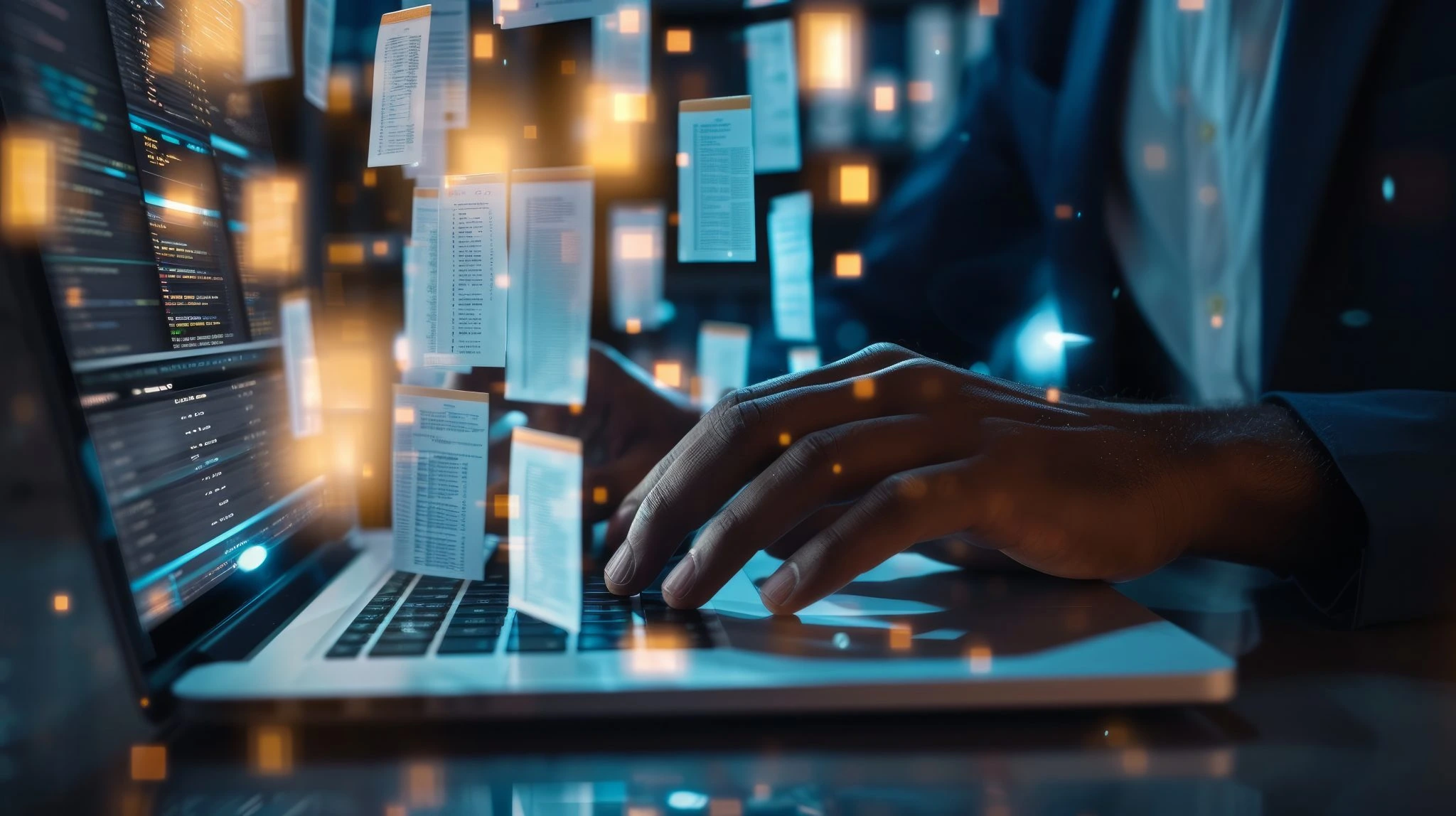In today's digital age, where technology is rapidly advancing and connecting people across the globe, there is a darker side that lurks within the shadows – cybercrime. With each passing year, cybercriminals become more sophisticated, devising new ways to exploit individuals and organizations for their personal gain. Sadly, India has not been spared from this growing menace.
As we dive into the realm of cybercrimes in India in 2021, it becomes crucial to understand its implications and consequences on our society. From financial frauds to data breaches and online harassment, these crimes have cast a shadow over the lives of countless Indians. So let us embark on this journey together as we shed light on the alarming rise of cybercrimes and explore how they have impacted our nation.
Buckle up! It's time to uncover the truth behind cyberattacks' pervasive presence and delve into strategies that can help protect ourselves from becoming victims in this virtual battlefield.
How have cybercrimes increased in India?
In recent years, India has witnessed a significant increase in cybercrimes. This surge can be attributed to various factors such as the rapid digitalization of services, increased internet penetration, and the rising use of smartphones. With more people going online for their daily activities, cybercriminals have found new opportunities to exploit unsuspecting individuals. One of the main reasons for the increase in cybercrimes is the lack of awareness about online threats and inadequate cybersecurity measures. Many Indians are still unaware of basic precautions they should take while using the internet or sharing personal information online. Cybercriminals take advantage of this lack of knowledge to carry out phishing attacks, identity thefts, and financial frauds.
Another factor contributing to the rise in cybercrimes is the increasing sophistication and complexity of hacking techniques employed by cybercriminals. They constantly adapt and evolve their methods to bypass security systems and gain unauthorized access to sensitive data. From ransomware attacks targeting businesses to social engineering scams targeting individuals, these criminals leave no stone unturned in their pursuit of illegal gains. Moreover, with advancements in technology like artificial intelligence (AI) and Internet-of-Things (IoT), new avenues for cybercrime have emerged. Smart devices connected through IoT networks often have vulnerabilities that can be exploited by hackers. Likewise, AI-powered tools can be used for malicious purposes such as automating phishing campaigns or creating deepfake videos.
The consequences of these increasing cybercrimes are severe and far-reaching. Individuals face financial losses due to fraudulent transactions or stolen identities. Businesses suffer from disrupted operations, reputational damage, and loss of customer trust if they fall victim to data breaches or ransomware attacks. To protect themselves from cybercrimes, Indians need to adopt proactive measures such as regularly updating software on their devices, using strong passwords along with two-factor authentication wherever possible; being cautious while clicking on suspicious links or downloading files from unknown sources; refraining from sharing too much personal information online; and educating themselves about common cyber threats.
As per the research conducted by various organisations and
independent analysts, Ransomware attacks have been the most chronicled ones
during 2021. With an overall increase of 38 percent, these attacks have
targeted crucial industrial sectors and also individual consumers across the
globe. Comparatively from the first quarter
and last quarter of 2021, in India, the increase has been a whooping 65
percent.
Cyber-attacks through malware and scams have also been affecting
mobile users globally, wherein the most profound threats found were adware and
fleeceware. Cybercriminals mainly make use of the social engineering scams that
make them collect individual data of their victims and device a personalised cyber-attack through them. Various fake campaigns created by cyber criminals on
the pretext of an individual’s most commonly application use post pandemic
(video conferencing / calling application) and deceive their victims as they
have access to their device or camera. Similarly various other scams through
SMS carrying a banking trojan called Flubot, tricked victims to reveal their
personal information. Cyber Threats affecting mobile phones were more
profoundly reported during the pandemic, most commonly found were Adware –
around 54.7 percent during months between January to September; Secondly Fake
apps – around 10 percent; Thirdly Banking Trojans – around 9.6 percent and
Finally spywares around 2.3 percent. Additionally, fleeceware was also
discovered by researchers in more than 200 applications on the Apple App Store and Google Play Store.
Generally, the
most preferred cyber-attack by a fraudster to lure their victims is the
phishing attack. This has also been predominantly increasing in organisations
(around 40 percent) during 2021 globally, but comparatively lesser in India by
13 percent. Individual targets have also been increasing around 23 percent in
India (lesser than the global average).

An additional scope that cyber attackers have begun to exploit business and individuals are through cryptocurrencies. The most affected countries were attacked broadly through two malwares – Crackonosh and BluStealer. Crackonosh is a cryptocurrency mining malware that are attached to unlicensed version of most preferent games. BluStealer is malware possessing a combination of keylogger, document uploader and a cryptocurrency swindler. Apart from these two threat intelligence researchers also found other cryptocurrency-stealing malware that was distributed through HackBoss, a Telegram channel which, at the time of discovery, had stolen over $560,000 from victims.
Around 19,300 Android potentially harmful applications exposing the PII Personal Identifiable Information (PII) such as name, geolocation data, usernames and even passwords in certain cases were found to be existing. The most affected apps were associated to fitness, gaming, food delivery, lifestyle and mailing apps.
Cybercrimes have been a major issue in India and it's only getting
worse. The number of cyberattacks and data breaches is increasing every year,
making the need for stricter regulations imperative. While law enforcement
agencies are continuously trying to fight cybercrime, people must also take it
upon themselves to protect their online accounts against malicious actors by
taking extra precautionary measures such as creating strong passwords and using
two-factor authentication whenever possible. By doing so, we can all help
reduce the prevalence of cybercriminal activities in India - protecting our
personal information from unwanted exploitation. In accordance with the ongoing
situation cybercriminals have been improvising their strategies and have been
on par with the makeshift in technology. Every individual is being targeted
globally, leading to paradigm shift of crime towards the digital world. Hope we brace ourselves in the forthcoming
year being more cyber vigilant.
Consequences of 2021 cybercrimes in India?
The consequences of cybercrimes in India have been devastating in 2021. From financial losses to reputational damage, individuals and businesses have faced significant hardships as a result of these criminal activities. One of the major consequences is the loss of personal and sensitive data. Cybercriminals target individuals' personal information such as bank account details, social security numbers, and credit card information. This can lead to identity theft, fraudulent transactions, and even blackmail.
In addition to financial losses, cybercrimes also undermine trust in digital platforms. As more people rely on online services for shopping, banking, and communication, a breach in data security erodes confidence in these platforms. Consumers become hesitant about sharing their information online or conducting transactions digitally. Moreover, cybercrimes can disrupt critical infrastructure systems such as power grids or transportation networks. These attacks not only cause inconvenience but also pose serious threats to public safety.
Furthermore, cybercrimes can have severe psychological impacts on victims who may experience fear, stress, anxiety or depression as a result of being targeted by criminals online. It is essential for all Indians to take measures to protect themselves from cybercrimes by using strong passwords for their accounts, being cautious while clicking on suspicious links or downloading attachments from unknown sources, keeping software up-to-date, and regularly backing up important data. By staying vigilant and implementing cybersecurity best practices, we can minimize the impact of cybercrimes on our lives and ensure a safer digital environment for everyone.
How can Indians protect themselves from cybercrimes?
In today's digital age, the threat of cybercrimes looms large. Indians are not immune to this growing menace, and it is crucial for individuals to take proactive steps to protect themselves from falling victim. Here are some practical measures that can help safeguard against cybercrimes. It is essential to stay informed about the latest trends in cyber threats. Regularly educating oneself about various types of scams, phishing attacks, and malware can help individuals recognize potential risks and avoid them.
Strong passwords are a must! Using unique combinations of letters, numbers, and symbols for different online accounts adds an extra layer of security. It is also advisable to enable two-factor authentication whenever possible. Be cautious while sharing personal information online. Avoid oversharing on social media platforms as this data can be exploited by cybercriminals. Additionally, refrain from clicking on suspicious links or downloading unknown attachments in emails or messages.
Fourthly, keep devices updated with the latest security patches and antivirus software. These updates often address vulnerabilities that hackers may exploit. Lastly but importantly, regular backups should become a habit! Creating backups of important files ensures that even if they fall into the wrong hands or get encrypted by ransomware attacks; one has a copy available.
By following these preventive measures along with maintaining vigilance while engaging in online activities – such as being wary of unsolicited requests for personal information – Indians can significantly reduce their vulnerability to cybercrimes.
Conclusion
In today's digital age, cybercrimes have become a growing concern for individuals and businesses alike. India has seen a significant increase in cybercrimes in recent years, with 2021 being no exception. From phishing attacks to data breaches, Indians are facing numerous consequences as a result of these malicious activities.
The consequences of cybercrimes can be devastating for those affected. Financial losses, identity theft, reputational damage, and emotional distress are just some of the outcomes that victims may experience. Moreover, cybercrimes not only impact individuals but also have broader implications for the economy and national security.
To protect themselves from cybercrimes, Indians should take proactive measures such as using strong passwords, keeping software updated, being cautious while sharing personal information online or through emails, avoiding suspicious links or attachments, and regularly backing up their data. Additionally, raising awareness about cybersecurity among individuals and organizations is crucial to prevent falling victim to these crimes.
Like this article? Share it with
others!
Source: Internet
Reach out to us any time to get best cybersecurity services to fit
your needs. Check out Our Google Reviews for a better understanding of our services
and business.
If you are looking for Affordable Cybersecurity Services in Bangalore, give us a call on +91 91089
68720 / +91 94490 68720.





Write a public review